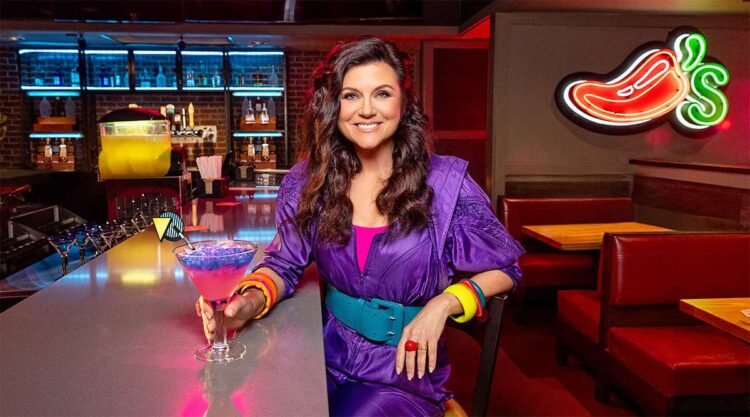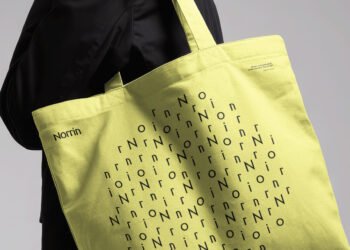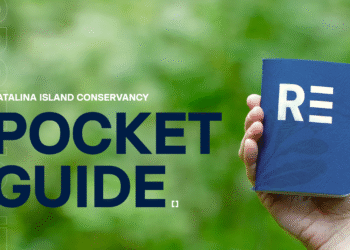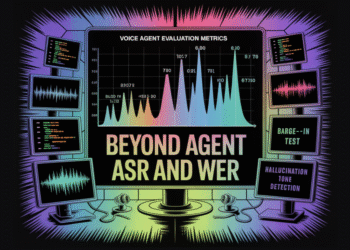Where are you eating this evening? Where are you meeting friends for appetizers and a drink? Where are you having lunch?
The buzz in the restaurant business is that casual dining (easy-going sit-down, table service, tip for the wait staff) is having a moment while fast food (ex., McDonald’s) and fast casual (ex., Chipotle) are in the midst of slowdowns.
The problem may be that to protect margins, fast food, fast casual, and certain casual establishments have become nonplaces.
Reporting in the business press provides numerous reasons why casual dining establishments are doing well. Even though casual dining chains have faced some rough roads and experienced Chapter 11, for example, Red Lobster, casual dining is showing signs of life.
The main focus appears to be value propositions. This is great news for brand management. But, only if managed smartly. Most of the restaurants that have guest traffic issues do not appear to have a good understanding of what value is exactly. Managers seem to confuse value with deals. This misguided approach to value misses the fact that the issue is value as customers perceive brand value, which is much more than mere price.
This article is part of Branding Strategy Insider’s newsletter. You can sign up here to get thought pieces like this sent to your inbox.
Value is what you get for what you pay. This is a mental equation that we use to evaluate the worth of a purchase. However, over time, the elements of our mental value equations have changed, become more sophisticated, more nuanced. Now, we perceive value based on a brand’s total brand experience, not just the functional benefit, relative to the brand’s total costs, not just money.
Total brand experience delivers functional benefits, emotional and social rewards, a reflection of our personal values, and a brand personality to which we can relate. When a brand makes a promise, the promise is “buy this brand; receive this experience.”
Total brand costs are more than money. Sure, price is important. But, so is time and effort. How much time will this brand demand? How difficult will it be to make a decision? Total brand costs are money, time, and effort. Stand in front of the toothbrush aisle in your local pharmacy. Choosing a toothbrush can take a lot of time and effort. How about shampoo? Gone are the days when Breck offered the simple choice of Dry, Normal, or Oily. Compare Carvana with a trip to the local dealership.
Using the customer-perceived value equation, if the numerator, the total brand experience, is high (that is, a great total brand experience) and the denominator, the total brand costs, is acceptable or low, this brand is a good or great value. The numerator is larger than the denominator. But if the brand has a numerator that is just not great ( that is, a poor total brand experience), then relative to the denominator, the total brand costs, the value equation is out of whack. The total brand costs exceed the revenue you receive for those costs. This means that you are paying (in terms of price, time, and effort) more than you should for this mediocre brand. Whether this is your arithmetic class or your mental equation, you will assess the numerator relative to the denominator. In marketing, if the denominator is larger than the numerator, you have a brand value problem.
Here is where fast food, fast casual, and some casual dining restaurants have gone off track: opting for a lesser total brand experience.
Fast food and fast casual brands have seemingly let the total brand experience slide. Technology – digital and AI investments – has allowed restaurants to make the dining experience, whether eating in or through drive-thru, soulless and non-personal. To save margins, personal service is replaced by kiosks, screens, and QR codes. Just a place to get food that is probably not that good a value because the denominator is leading the way. Aiming to mimic the corner gas station – drive in, purchase, drive out – is not a viable goal for an eating establishment.
When Ray Oldenburg wrote his book, The Great Food Place, raising the idea of the third place, he also talked about Nonplaces. We may have missed the significance of the nonplace because the book focused so heavily on the third place and community and conviviality.
What seems to have happened in restaurants is that by cutting back on the total brand experience, the numerator, restaurants have moved to becoming nonplaces. Certainly, there is the food, the deal, and the advertising. But what about the sense that this place is for me?
For those of you who may not be aware of this, places such as McDonald’s were, in the past, places that were welcoming, fun, and with service that felt personal. In fact, Ray Kroc’s mantra was QSC& V, where the S stood for service.
Here is how Mr. Oldenburg describes the nonplace:
“Where once there were places, we now find nonplaces. In real places, the human being is a person. He or she is an individual, unique and possessing a character. In nonplaces, individuality disappears. In nonplaces, character is irrelevant, and one is only the customer or shopper, client or patient, a body to be seated, an address to be billed, a car to be parked. In nonplaces, one cannot be an individual or become one, for one’s individuality is not only irrelevant, it also gets in the way.”
Mr. Oldenburg talks about the eradication of the local establishments in an area or neighborhood by the corporate-designed, newly built fast food (or fast casual) nonplace.
The nonplace is a “plastic place where the help is almost as transient as the customer, where high school students learn to be a cog in the system…. The nonplace makes life a little less confusing, a little easier….” A nonplace becomes familiar. The nonplace is predictable, but “it offers a real place to nobody.”
The more an establishment focuses on the denominator at the expense of the numerator, the less customer-perceived value it has. The more an establishment focuses on the money element of the denominator (deals, price cuts), the more the brand is seen as cheap. Deals are merely stopgap activities. Deals probably do more harm than good for the brand’s overall customer-perceived value equation. Deals focus only on price. If the experience is impersonal or seems too long, the brand’s costs are higher, which raises the denominator.
Lower-income patrons may be more cautious when it comes to eating out. But, this does not mean that these individuals have a different approach to what is value. Everyone is value-conscious. Everyone wants a good value. Everyone wants the brand experience to be delivered at a cost that makes the brand a good value. No one wants a poor value. Everyone is value-conscious. Everyone wants a good value. Everyone wants the brand experience to be delivered at a cost that makes the brand a good value. No one wants a poor value.
Spending a lot for a mediocre experience that includes food and beverage is a poor value. Deal or no deal: the experience must be worthwhile.
Lest managers, brands, and business observers forget, the brand’s inherent value must be perceived as a fair value. Fairness is more than mere price. Fairness denotes – and connotes – justice. Justice means that the benefits-per-costs value equation is equitable, just, dependable, trustworthy, and fair. Building brand value is an ongoing challenge. Daily deals destroy brand value.
To increase shareholder value, a brand must be the most efficient and productive provider of a branded offer that customers value. Customers need to perceive the brand as offering great value, not just appreciate its price point. It is the role of the brand leadership to manage the relationship between what customers are willing to pay and what benefits they receive. Does the customer perceive that the balance is fair? What is the fair value for our offer? Marketers do not determine fair value. Customers do.
In a recent report by The Wall Street Journal, Brinker CEO Kevin Hochman said,
“We’re not the cheapest thing out there. But because we have a total value proposition that works—great food, great service, and an atmosphere people enjoy—that’s why we’re winning.”
Brinker’s Chili’s establishment is taking the lead. The Wall Street Journal refers to the current casual dining “renaissance” as the “Chili’s Economy.”
Mr. Hochman said that customers know the meal they will receive at McDonald’s, and customers perceive the differences that go beyond the food.
“You’ve got to get people to think and feel differently about you,” Hochman said. “Everyone knows what a combo meal costs—they’ve had a Big Mac meal, they know it’s around $10, and they know the size of the burger.”
As The Wall Street Journal reported,
“It isn’t just about price. Hochman says Chili’s has also ditched the old “cut to survive” playbook that hollowed out the experience offered at so many of his competitors. Instead, the chain invested in better ingredients, refreshed restaurants, and added staff hours—accepting near-term margin pressure to keep customers coming back. Diners know they will need to add a tip to the cost of the meal, so better make the service worth paying for.”
Hollowed out.
Yup.
This is exactly what appears to have happened at many fast food and fast casual – as well as some casual dining – establishments. Hollow out the numerator, the total brand experience, and you see and feel the total brand costs. Hollow out the numerator, and your place becomes a nonplace.
As a marketer, your job is to compete. Compete differently with The Blake Project.
Another part of the problem with fast food and fast casual is the misunderstanding of the competitive set. Customers see the competitive set as “places to eat out that deliver a great experience at a great price. A deciding factor is that this is a great brand experience at a price that delights. The factor is not solely “this is a great price for a meal.”
Additionally, a casual dining restaurant is for many people a fine dining experience. Now that the prices are comparable to a fast food meal, the choice is easy.
As fast food restaurants, fast casual restaurants, and some casual restaurants survey their unenviable positions with customers, it would be wise to improve their total brand experience. It would also be wise to actually understand what value really means to customers and how resetting corporate knowledge of customer-perceived value and customer-perceived competitive set is absolutely essential. Without the total brand experience, the brand is a nonplace. Eventually, nonplace leads to less customer-perceived brand value. Without brand value, there is no shareholder value.
Contributed to Branding Strategy Insider by: Joan Kiddon, Partner, The Blake Project, Author of The Paradox Planet: Creating Brand Experiences For The Age Of I
At The Blake Project, we help clients worldwide, in all stages of development, define and articulate what makes them competitive and valuable at pivotal moments of change. Please email us to learn how we can help you compete differently.
Branding Strategy Insider is a service of The Blake Project: A strategic brand consultancy specializing in Brand Research, Brand Strategy, Brand Growth, and Brand Education
Post Views: 2

















